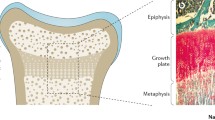Abstract
Nutritional rickets is not rare among Indian children. The involvement of several protein components in the metabolism and function of vitamin D suggests that protein nutrition may influence the final expression of its biological activity. Experiments in rats maintained on rachitogenic/diet showed that administration of vitamin D or its metabolites elicited for better response in those fed on low protein (5%) than on adequate protein (18%). The vitamin D metabolism was found to be similar in both the groups. The super responsiveness to vitamin D or its metabolites in rats fed on low protein diet was due to increased receptor concentration in the intestine. Clinical studies indicated that the metabolism and function of vitamin D and also vitamin D binding protein concentration were not altered in malnourished children with or without rickets. Serum 25-hydroxy vitamin D levels were found to be reduced in malnourished children without rickets as compared to normal children. Inadequate exposure to sunlight appears to be mainly responsible for rickets in children. In addition, malnutrition perhaps contributes to the development of the disease.
Similar content being viewed by others
References
McCollum EV, Simmonds N, Becker JE, Shipley PG. Studies on experimental rickets. XXI. An experimental demonstration of the existence of a vitamin which promotes calcium deposition.J Biol Chem 1922;53: 293–312
Mellanby E. An experimental investigation on rickets.Lancet 1919;i: 407–412
Goldblatt, H., Soames, KM. Studies on the fat soluble growth promoting factor (I) storage (II) synthesis.Biochem J 1923;17: 446–453
Steenbock H, Kletzien SWF, Halpin HG. The reaction of the chicken to irradiated ergosterol and irradiated yeast as contrasted with the natural vitamin D in fish liver oils.J Biol Chem 1932;97: 249–264
Pramanik AK, Gupta S, Agarwal PS. Rickets in protein calorie malnutrition.Indian Pediatr 1971;8: 295–299
Manchanda SS, Lal H. The challenge of rickets in Punjab.Indian J Pediatr 1972;39: 52–57
Ponchon G, DeLuca HF. The role of the liver in the metabolism of vitamin D.J Clin Invest 1969;48: 1273–1279
Ponchon G, Kennan AL. DeLuca HF. “Activation” of vitamin D by the liver.J Clin Invest 1969;48: 2032–2037
Horsting M, DeLuca HF. In vitro production of 25-Hydroxycholecalciferol.Biochem Biophys Res Commun 1969;36: 251–256
Bhattacharyya MH. DeLuca HF. Subcellular location of rat liver calciferol-25-hydroxylase.Arch Biochem Biophys 1974;160: 58–62
Olson EB Jr, Khutson JC, Bhattacharyya MH, DeLuca HF. The effect of hepatoctomy on the synthesis of 25-hydroxy vitamin D3.J Clin Invest 1976;57: 1213–1220
Fraser DR, Kodicek E. Unique biosynthesis by kidney of a biologically active vitamin D metabolite.Nature 1970;228: 764–766
Gray R, Boyle I, DeLuca HF. Vitamin D metabolism; the role of kidney tissue.Science 1971;172: 1232–1234
Gray RW, Omdahl JL, Ghazarian JG, DeLuca HF. 25-hydroxycholecalciferol-1-hydroxylase: subcellular location and properties.J Biol Chem 1972;247: 7528–7532
Ghazarian JG, Jefcoate CR, Knutson JC, Orme-Johnson WH, DeLuca HF. Mitochondrial cytochrome P450: a component of chick kidney 25 hydroxycholecalciferol-1α-hydroxylase.J Biol Chem 1974;249: 3026–3033
Imawari M, Kida K, Goodman DS. The transport of vitamin D and its 25-hydroxy metabolite in human plasma.J Clin Invest 1976;58: 514–523
Haddad JG, Walgate J. 25-hydroxyvitamin D transport in human plasma.J Biol Chem 1976;251: 4803–4809
DeLuca HF. Vitamin D metabolism and function.Arch Intern Med 1978;138: 836–847
Raghuramulu N, DeLuca HF. The effect of dietary protein on the biological activity of cholecalciferol and its metabolites in the rachitic rat.J Nutr 1980;110: 28–34
Raghuramulu N, Deluca HF. Level of protein in the diet on vitamin D3 metabolism and function in rats.Indian J Nutr Dietet 1979;16: 257–262
Reddy V, Srikantia SG. Serum alkaline phosphatase in malnourished children with rickets.J Pediatr 1967;71: 595–597
Salimpour R. Rickets in Tehran. Study of 200 cases.Arch Dis Child 1975;50: 63–66
Raghuramulu N, Reddy V. Serum 25-hydroxy vitamin D levels in malnourished children with rickets.Arch Dis Child 1980;55: 285–287
Raghuramulu N, Reddy V. Studies on vitamin D metabolism in malnourished children.Br J Nutr 1982;47: 231–234
Author information
Authors and Affiliations
Rights and permissions
About this article
Cite this article
Raghuramulu, N. Etiology of rickets in India. Indian J Pediatr 54, 521–527 (1987). https://doi.org/10.1007/BF02749046
Issue Date:
DOI: https://doi.org/10.1007/BF02749046




